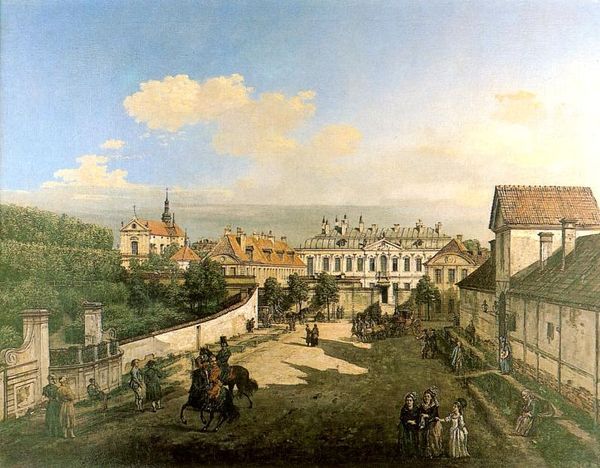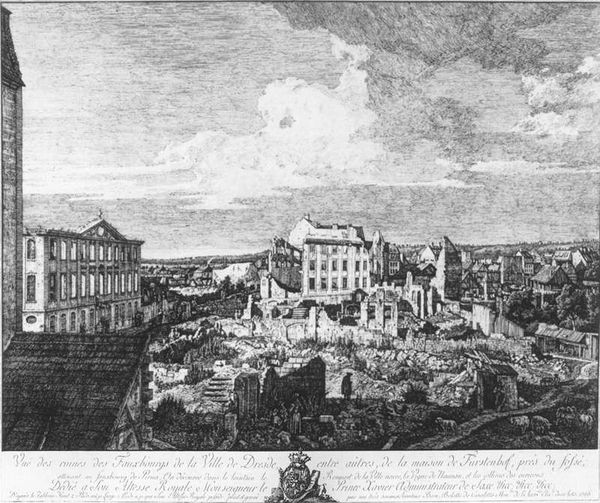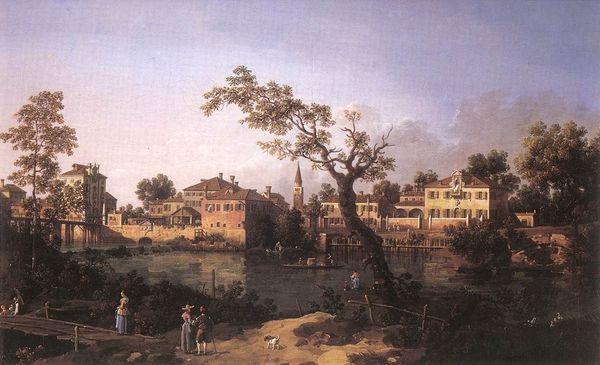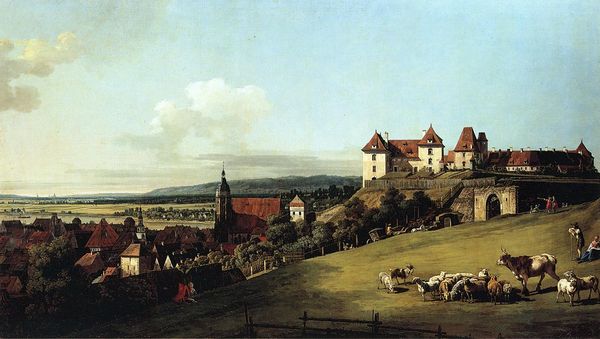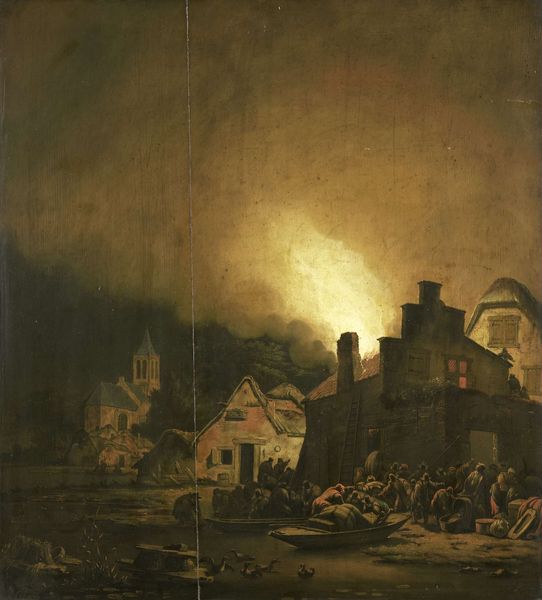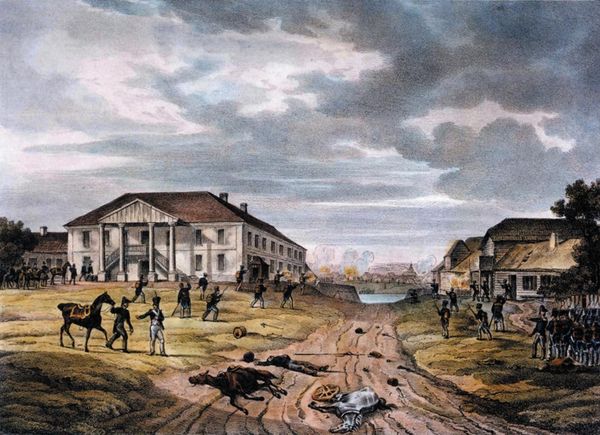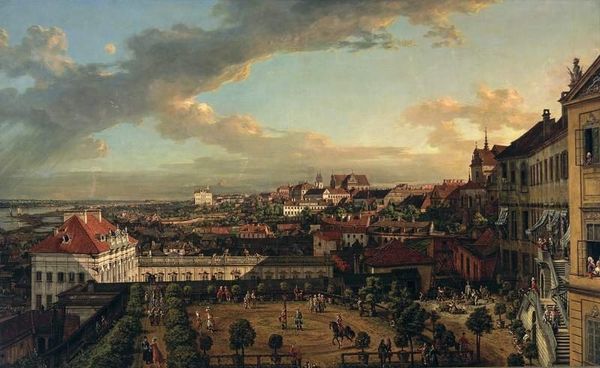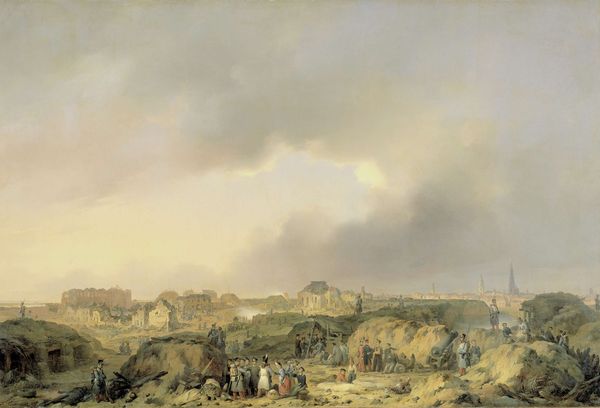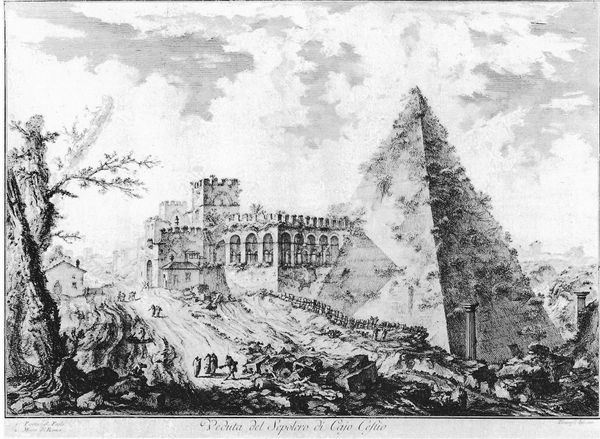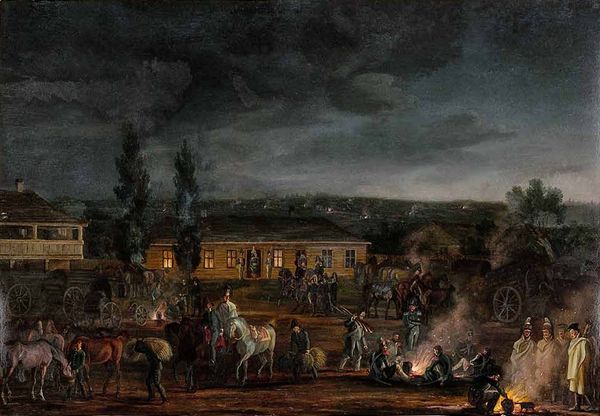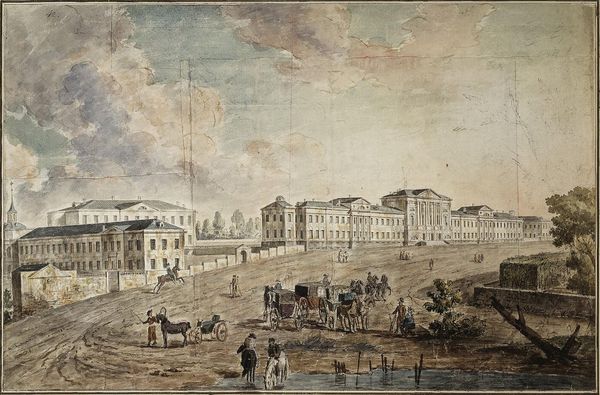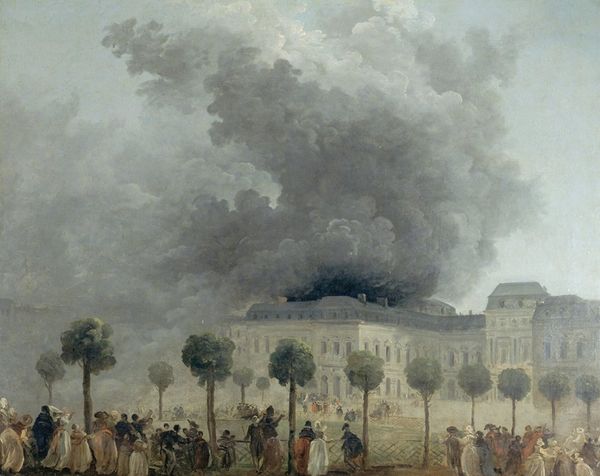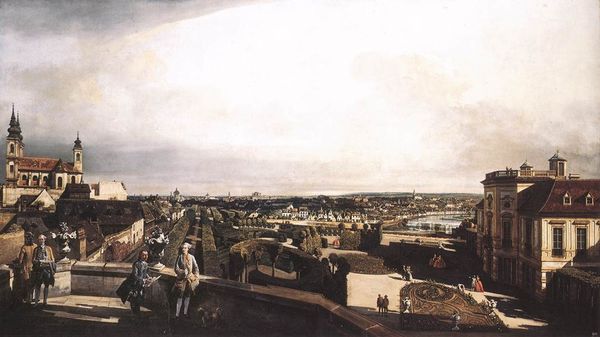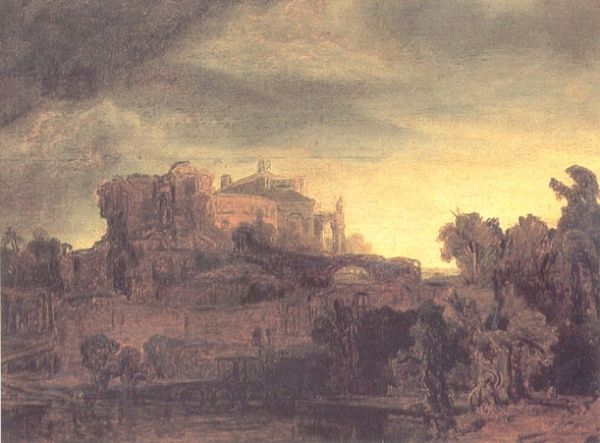
Dimensions: 80 x 112 cm
Copyright: Public domain
Curator: Bernardo Bellotto's 1763 oil on canvas, "Dresden, the Ruins of the Pirnaische Vorstadt," offers a sobering vista. Editor: The muted palette immediately sets a tone of desolation, doesn’t it? All those browns and grays punctuated by that bruised-looking sky. It’s as if the landscape itself is in mourning. Curator: The painting depicts the aftermath of the Seven Years’ War. Beyond the immediate devastation, the remnants of classical architecture hint at a lost era of prosperity. Consider the half-standing columns, the suggestion of a pediment. Bellotto employs these to symbolize not just the destruction of buildings, but the collapse of a cultural ideal. Editor: Yes, but look closer at what's *left*. Those piles of brick, the charred timbers. It’s the raw materiality of the ruins that grips me. How much labor was invested in creating this cityscape? And now, what is the human cost of dismantling? The waste… all those shattered pieces, scattered by the fortunes of war. Curator: Bellotto also offers us a sense of hope or perhaps, resilience. We see people in the lower register, amidst the ruins; life emerging amidst the chaos, bearing the mark of trauma. It brings forward a poignant representation of collective trauma, embedded within the architectural symbols. Editor: You're right, I see figures going about their day; children, carts... Almost invisible but still persisting with their life’s tasks in this ruined place. Also notice the artist’s technique! It seems precise, calculated brushstrokes that construct tangible representations of damaged and reworked material surfaces, brick upon broken brick, a chronicle in labor itself. Curator: It really invites us to contemplate the cyclical nature of history, destruction and rebirth... all viewed through Bellotto's careful eye and imbued with layers of symbolic resonance. Editor: Absolutely, and with the concrete materials, both of destruction and of endurance. What a testament to Dresden's endurance, and how poignant his treatment of paint and material has helped to express that sentiment!
Comments
No comments
Be the first to comment and join the conversation on the ultimate creative platform.
